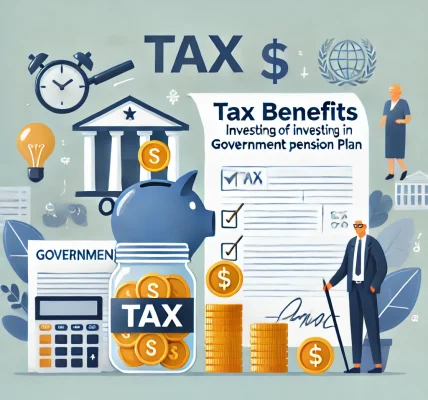Introduction
Government pension schemes are a crucial part of financial security for millions of individuals, providing a steady source of income post-retirement. However, there are several myths and misconceptions surrounding these pension plans that lead to confusion and, at times, deter eligible individuals from taking advantage of these schemes.
In this blog, we will bust some of the most common myths about government pension schemes and present the facts to help individuals make informed decisions regarding their retirement planning.
Myth #1: Government Pension Schemes Are Only for Government Employees
Reality:
Many people believe that only government employees are eligible for pension schemes, but this is not true. While government employees do have exclusive pension benefits, various government-backed pension schemes cater to individuals from different sectors, including private-sector employees, self-employed individuals, and unorganized workers.
Popular Government Pension Schemes for Non-Government Employees:
- National Pension System (NPS) – Open to all Indian citizens, including private employees and self-employed individuals.
- Atal Pension Yojana (APY) – Designed for workers in the unorganized sector.
- Pradhan Mantri Vaya Vandana Yojana (PMVVY) – Specifically for senior citizens.
Myth #2: Government Pensions Are Insufficient to Cover Retirement Needs
Reality:
While it is true that some government pension schemes offer modest returns, many schemes allow individuals to accumulate a substantial corpus over time, ensuring a comfortable retirement. Additionally, pension schemes like NPS provide flexibility to choose higher contribution amounts, leading to better payouts.
How to Maximize Pension Benefits?
- Invest early and contribute consistently.
- Opt for a diversified portfolio in NPS for higher returns.
- Consider additional retirement savings like PPF and EPF along with pension schemes.
Myth #3: Pension Schemes Are Not Safe and Involve High Risk
Reality:
Government pension schemes are among the safest financial instruments available. These schemes are regulated by the government and managed by reputed institutions such as the Pension Fund Regulatory and Development Authority (PFRDA) for NPS and the Life Insurance Corporation of India (LIC) for PMVVY.
Government-backed pension schemes provide assured returns, and in some cases, even minimum guaranteed pensions, ensuring financial security.
Myth #4: You Can Withdraw the Entire Pension Fund at Retirement
Reality:
Most government pension schemes have structured withdrawal rules to ensure financial stability post-retirement.
Withdrawal Rules:
- National Pension System (NPS): Upon retirement, 40% of the corpus must be used to purchase an annuity, while the remaining 60% can be withdrawn as a lump sum.
- Atal Pension Yojana (APY): Fixed monthly pension payouts with no lump sum withdrawal.
- EPF & EPS: Employees can withdraw EPF contributions, but EPS is paid as a monthly pension.
These regulations are in place to ensure individuals have a steady income rather than exhausting their retirement savings too soon.
Myth #5: Pension Amount is Fixed and Cannot Be Increased
Reality:
Government pension schemes often have options for increasing pension payouts.
Ways to Increase Pension Income:
- Higher Contributions: NPS allows individuals to contribute more to build a larger retirement corpus.
- Inflation-Adjusted Annuity Plans: Some pension plans offer increasing annuity options to tackle inflation.
- Government-Announced Revisions: Schemes like APY and EPS are periodically reviewed, and pension amounts may be revised based on government policies.
Myth #6: Pension Funds Are Tax-Free
Reality:
While government pension schemes offer tax benefits, not all pension payouts are entirely tax-free.
Tax Benefits vs. Taxation on Pensions:
- NPS Contributions: Eligible for tax deductions under Section 80CCD(1) and 80CCD(1B).
- NPS Withdrawals: The lump sum withdrawal is tax-free up to 60%, but annuity payments are taxable.
- EPF Withdrawals: Tax-free if withdrawn after five years of continuous service.
Understanding taxation rules helps individuals plan their retirement finances efficiently.
Myth #7: Once a Pension Scheme is Opted, It Cannot Be Changed
Reality:
Many government pension schemes allow for changes in investment choices, fund allocation, and annuity options.
Modifications Allowed:
- NPS: Subscribers can change fund managers and adjust asset allocation.
- Annuity Plans: Different annuity options can be selected at the time of maturity.
- Voluntary Contributions: Additional contributions can be made in NPS for higher benefits.
Myth #8: Pension Benefits End After the Death of the Subscriber
Reality:
Most government pension schemes have provisions for the nominee or spouse to continue receiving pension benefits after the death of the subscriber.
Survivor Benefits in Pension Schemes:
- NPS: Spouse can opt for annuity continuation or lump sum withdrawal.
- APY: Pension continues for the spouse after the subscriber’s demise.
- PMVVY: The purchase price is returned to the nominee after the pensioner’s death.
These provisions ensure financial support for dependents even after the pensioner’s demise.
Conclusion
Government pension schemes are designed to provide financial stability and security in retirement. However, due to widespread myths and misinformation, many individuals either hesitate to enroll or fail to maximize their benefits. By understanding the facts, individuals can make well-informed decisions and secure their future effectively.
If you are considering a government pension scheme, it is always advisable to consult with a financial expert to choose the best plan suited to your needs.




